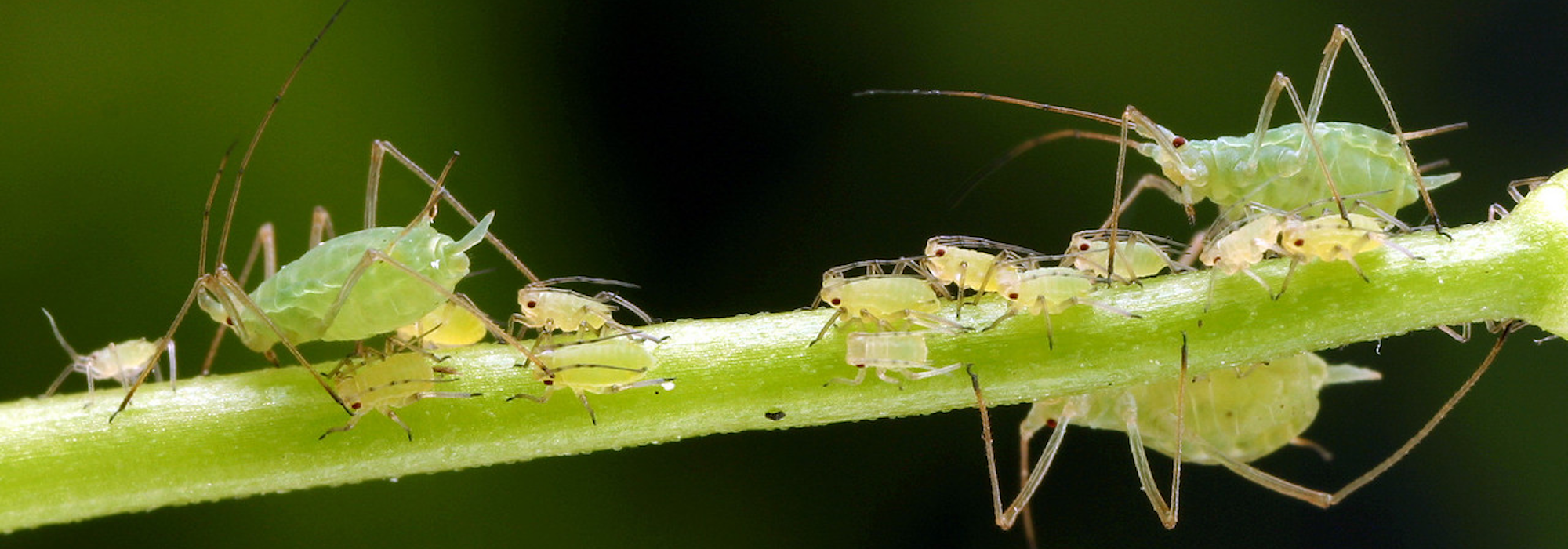Nancy A. Moran
Research
CURRENT RESEARCH
PAST RESEARCH
- Elucidating the molecular bases of species interactions in host-associated bacterial communities
- Role of Gut Microbiota in Honey Bee Health
- Coevolutionary dynamics in an obligate insect symbiosis
- Colonization by a Co-evolved Gut Community
- Dual Obligate Intracellular Symbionts
- Control of Bee Behavior by Stably Engineered Gut Microbial Communities
- Dimensions of Biodiversity: the Gut Microbiota of Bees
- Environmental Genomics of Symbionts in Pea Aphids
- Genomics of Bacterial Symbionts of Plant Sap-Feeding Insects
- Biocomplexity in the Environment
- Bacterial Endosymbiont Diversity in Drosophilla
- Biocomplexity of Symbiotic Bacteria
- Genomic Evolution of Buchnera
- Evolutionary Dynamics of Endosymbiont-Borne Adaption on Aphids
- Molecular Phylogenetics of Sternorrhyncha
- Phylogenetics of Aphids
- Genetically Variable Complex Life Cycles in Heterogeneous Environments
PAST Research Projects

Molecular Phylogenetics of the Sternorrhyncha (Insecta: Homoptera) and Their Bacterial Endosymbionts
(PI is Nancy Moran)
Aphids, whiteflies and related insects include some of the most devastating pests of agriculture and forestry. The survival and reproduction of all of these insects depend on distinctive bacteria called endosymbionts. These bacteria live inside special cells of their insect hosts and they manufacture essential nutrients that are absent from the plant sap that is the sole diet of these insects. Endosymbionts are normally passed from mother insect to offspring, with transmission occurring internally. Scientists studying these insects have long speculated that properties of the insects, such as ability to attack particular varieties of plants, might depend on the nature of the endosymbionts. Furthermore, associations with one strain of bacteria might sometimes be lost and replaced by associations with a different strain. In fact, acquisition of new bacterial associates has been suspected to be the basis of new abilities of insects to attack previously resistant plant varieties. Until recently, these suspicions could not be tested because the endosymbiont bacteria cannot be grown outside their insect hosts and were therefore difficult or impossible to characterize. Modern methods of molecular biology now allow us to explore these previously mysterious organisms. This project, a collaboration between an entomologist and a bacteriologist, uses DNA sequences from both the insect genes and the bacterial genes in order to answer questions regarding the origin and persistence of the associations between these insects and their endosymbiotic bacteria. Preliminary results have shown that the association between aphids and their primary endosymbionts is extremely long lived, persisting for millions of years. An implication for agricultural pest management is that the appearance of new strains of aphid pests is not due to the acquisition of new bacterial associates, as previously speculated. Also, initial work during the first year of funding with a prior NSF award showed that a new strain of whitefly that has become a devastating pest of vegetable crops did not originate through the gain of a new bacterial associate, as speculated previously by agricultural entomologists.
Characterization of the long term history of the endosymbiotic associations between these specialized bacteria and their host insects will add to basic knowledge of an essential aspect of the biology of these important insect groups which include many economically important pest species. This research takes advantage of recent developments in molecular biology and also in computer processing of the DNA sequences.